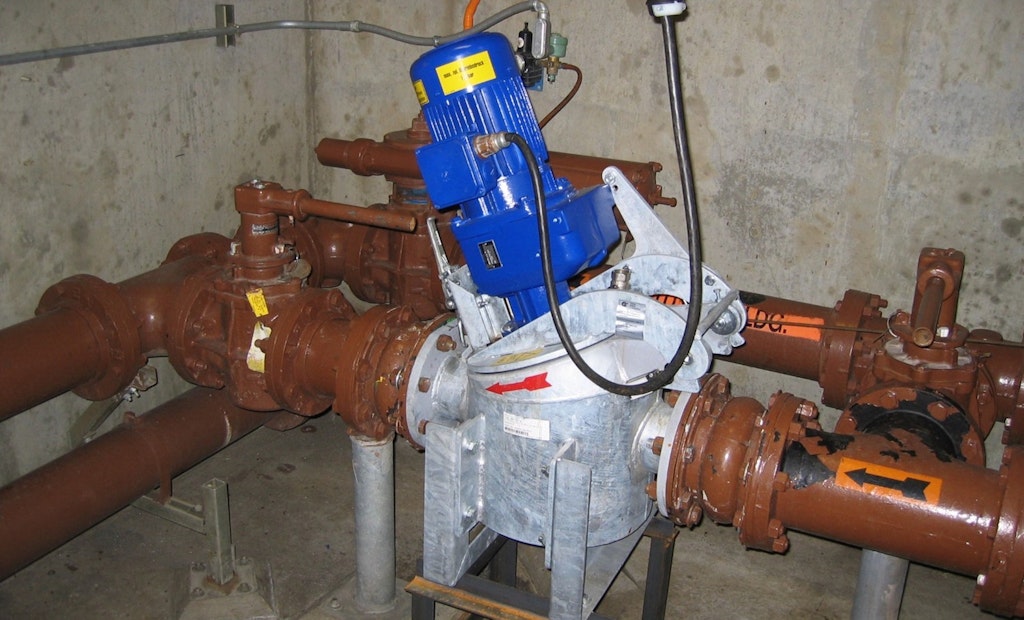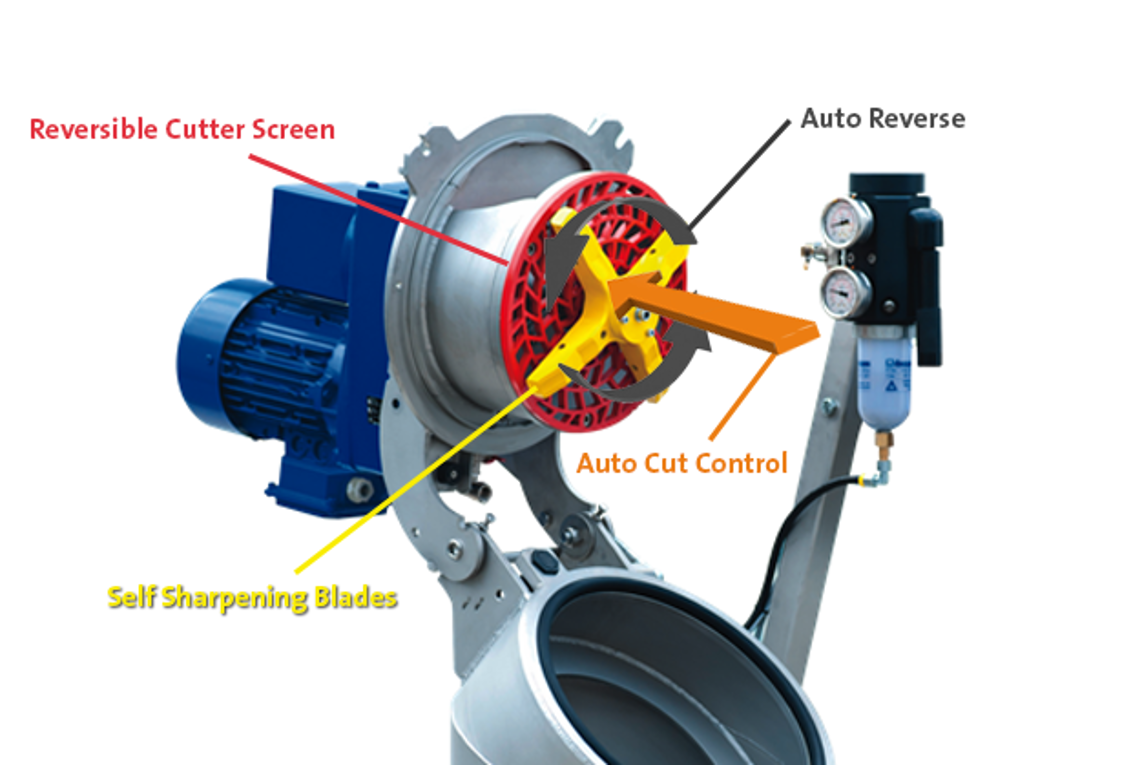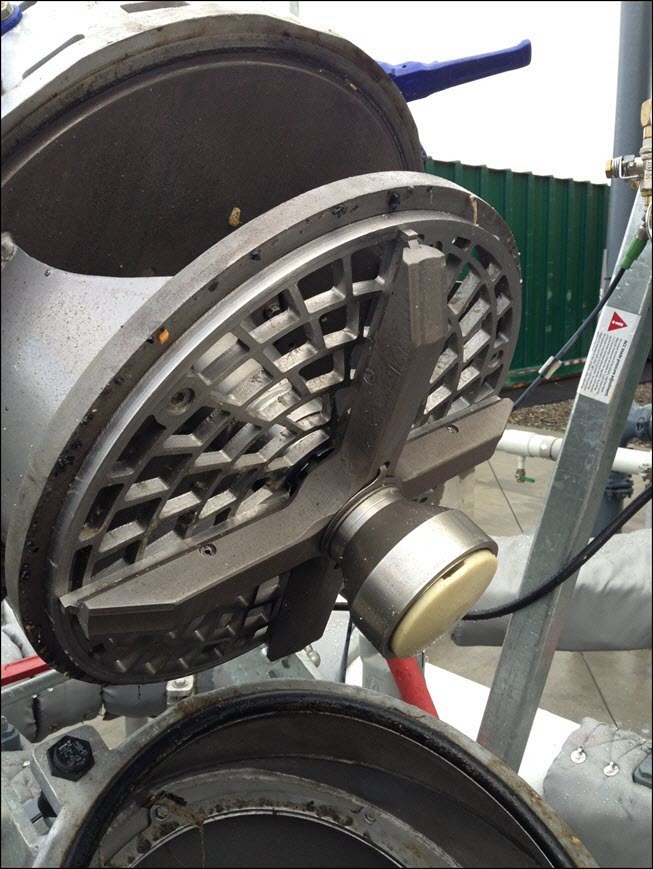Digesters and heat exchangers rely on properly conditioned organic waste or feedstock for proper operation. As part of the conditioning, the particle size of the waste has a substantial effect on efficiency. In order to increase efficiency of the digestion process, the optimized solid particle size needs to be consistent around 3/16-inch. This particle size is achieved with the use of solids reduction equipment.
Cut, don’t shred
Often, grinders are installed in feed lines going to the digester or recirculation lines. But this can often hinder rather than help the digestion process. One of the most prevalent problems with using a grinder for size reduction is the production of ragging — where solids and fibers that are shredded ball up after they pass through the grinder. This is due to grinders only having the capability to shred rather than cut, creating stringy inconsistent output, especially when it comes to hair. Along with decreasing digester efficiency, this buildup requires costly cleanings to get things operating again.

Twin-shaft grinder (left) only shreds the rope, whereas the the RotaCut macerator (right) completely reduces the rope to finely cut fiber.
Conversely, the Vogelsang RotaCut macerator produces more defined, smaller and more consistent particle size with a “scissor-like” cut. This smaller particle size leads to faster and more efficient digestion. The chances of the solids and fibers to ball up after the RotaCut are much less compared to a twin shafted grinder. This is because a twin shaft grinder doesn’t really cut any fibers or hair due to the design and mechanics of the technology. With a twin-shaft grinder, there is no contact between blades/rotors. A RotaCut automatically keeps constant pressure of the blades onto the cutting screen.
Digester recirculation, heat exchanger
As new organic waste is added on a daily basis to the digester, it is usually colder that the temperature in the digester. The normal temperature of an anaerobic digester needs to be around 90-98 degrees F, so the sludge is recirculated through a heat exchanger in order to maintain this desired temperature. Due to the design of most heat exchangers, long fibrous waste or rags balls will often lead to plugging. Once again, the RotaCut’s cutting action prevents this type of plugging from happening by ensuring waste is reduced to a particle size that easily passes through the system.
Smart cutting technology
In order to perform scissor-like cutting, the RotaCut cutter blades require constant pressure against the cutter screen. The blades are designed to wear over time but must wear evenly to achieve maximum life cycle. The Auto Cut Control monitors blade wear and automatically adjusts blade pressure against the cutting screen as the blades wear over time. The RotaCut also has an integrated heavy material separator so any heavy solids are easily removed and kept out of the cutting system. The built-in auto-reverse feature is how the RotaCut handles large objects; the unit automatically reverses the rotation of the blades until the object is cleared, reduced and passed through the screen. Auto reverse also engages at preset intervals, which keeps the blades wearing evenly. Other benefits of the RotaCut include easier in-line maintenance, since the hinged lid can effortlessly be opened to access the cutter head.








